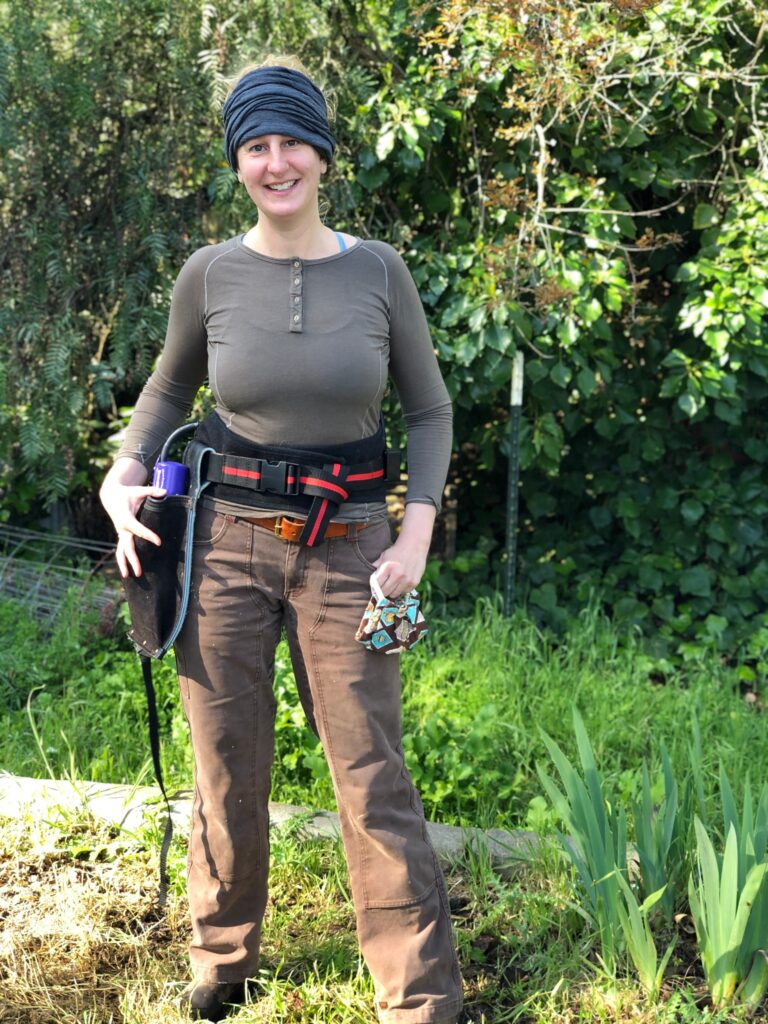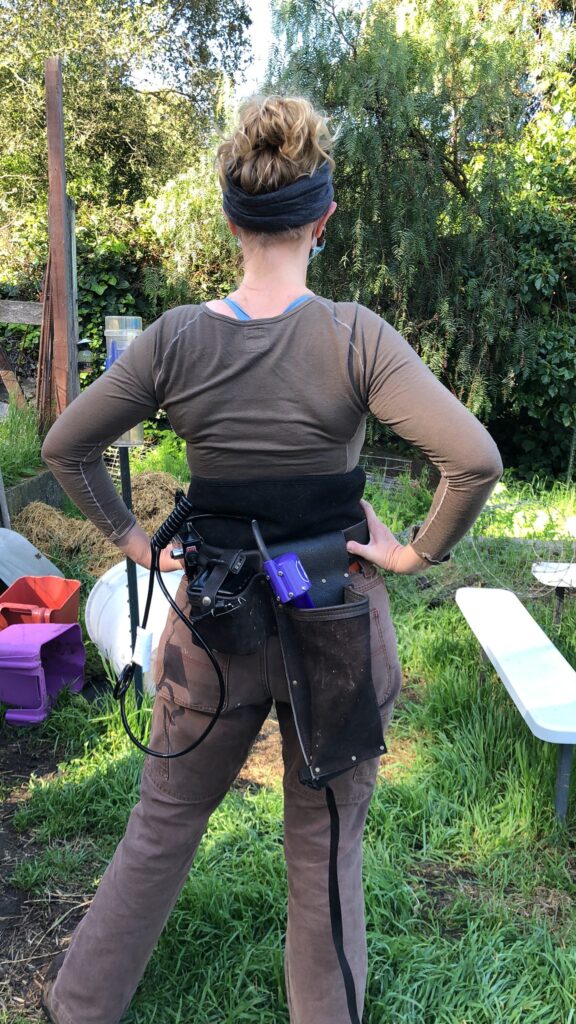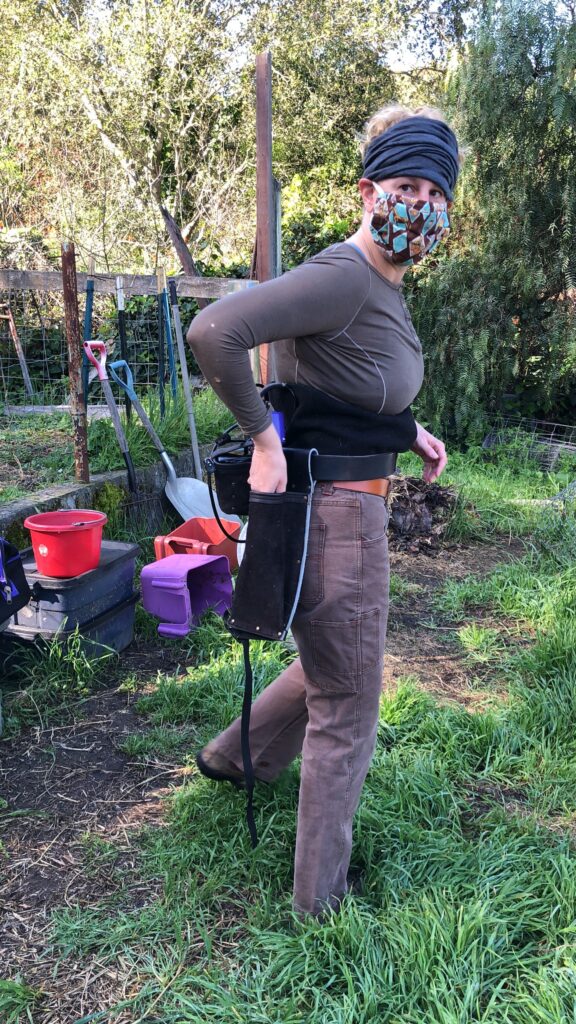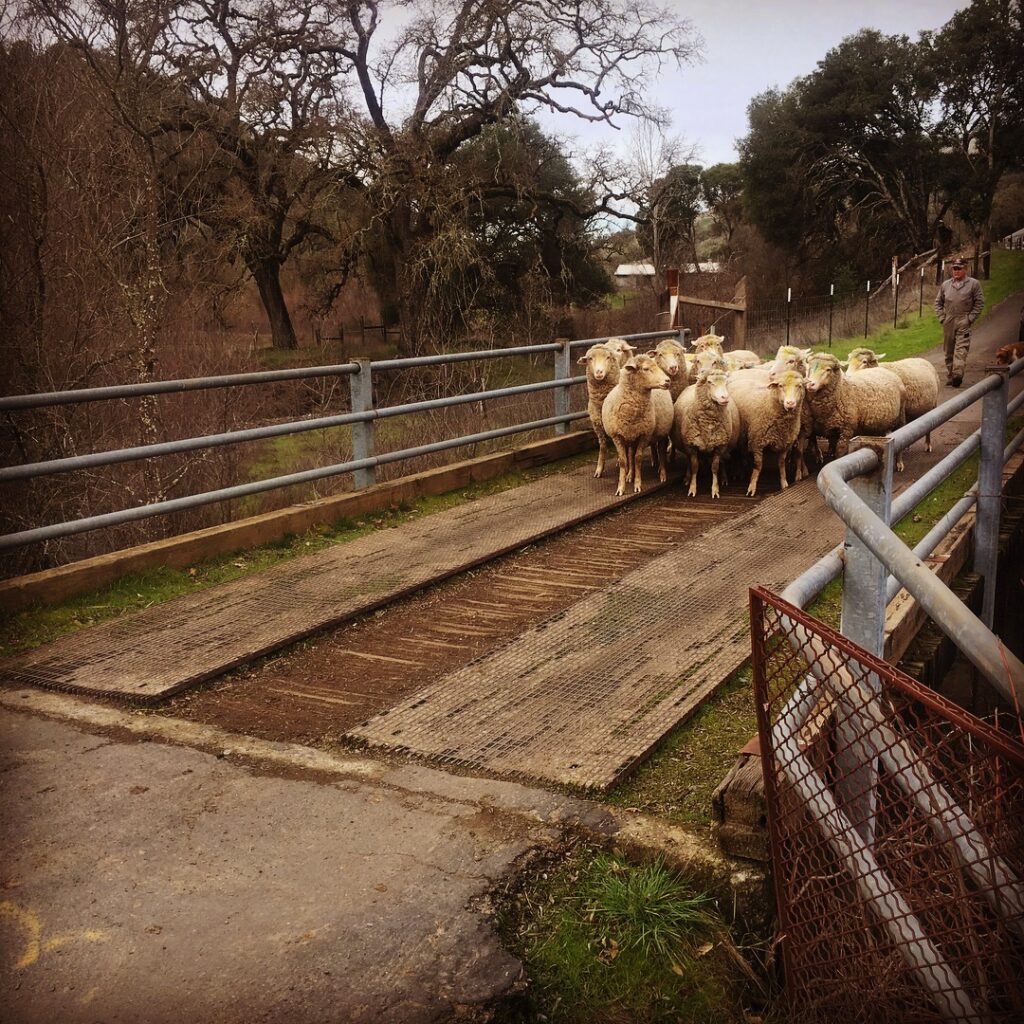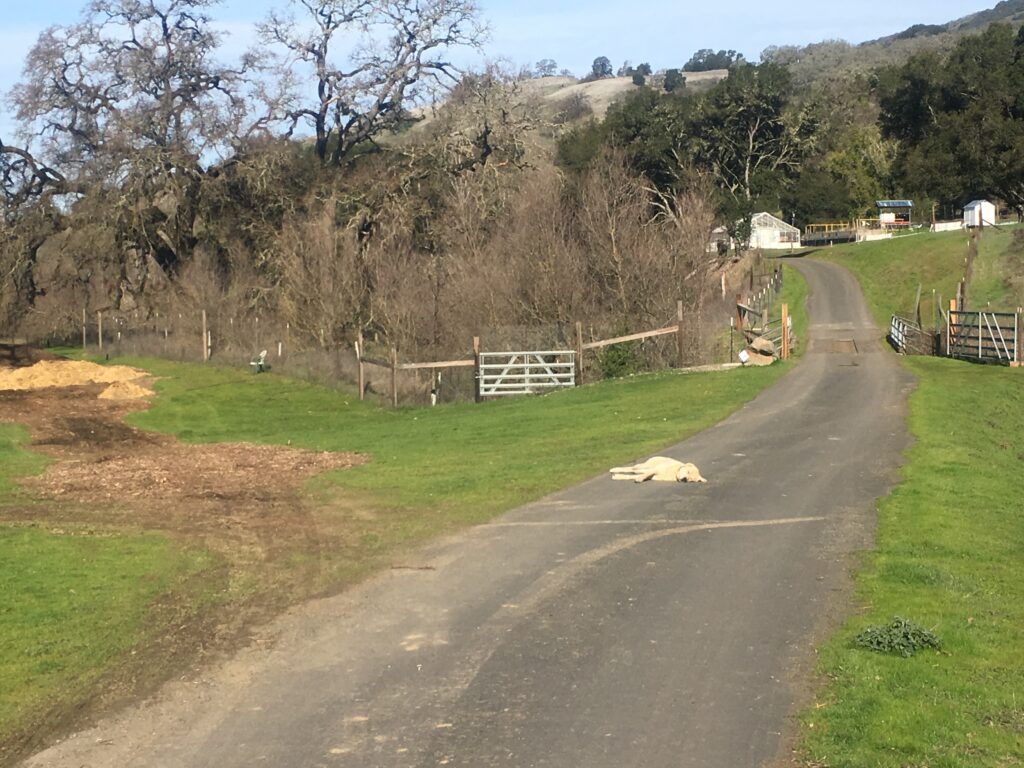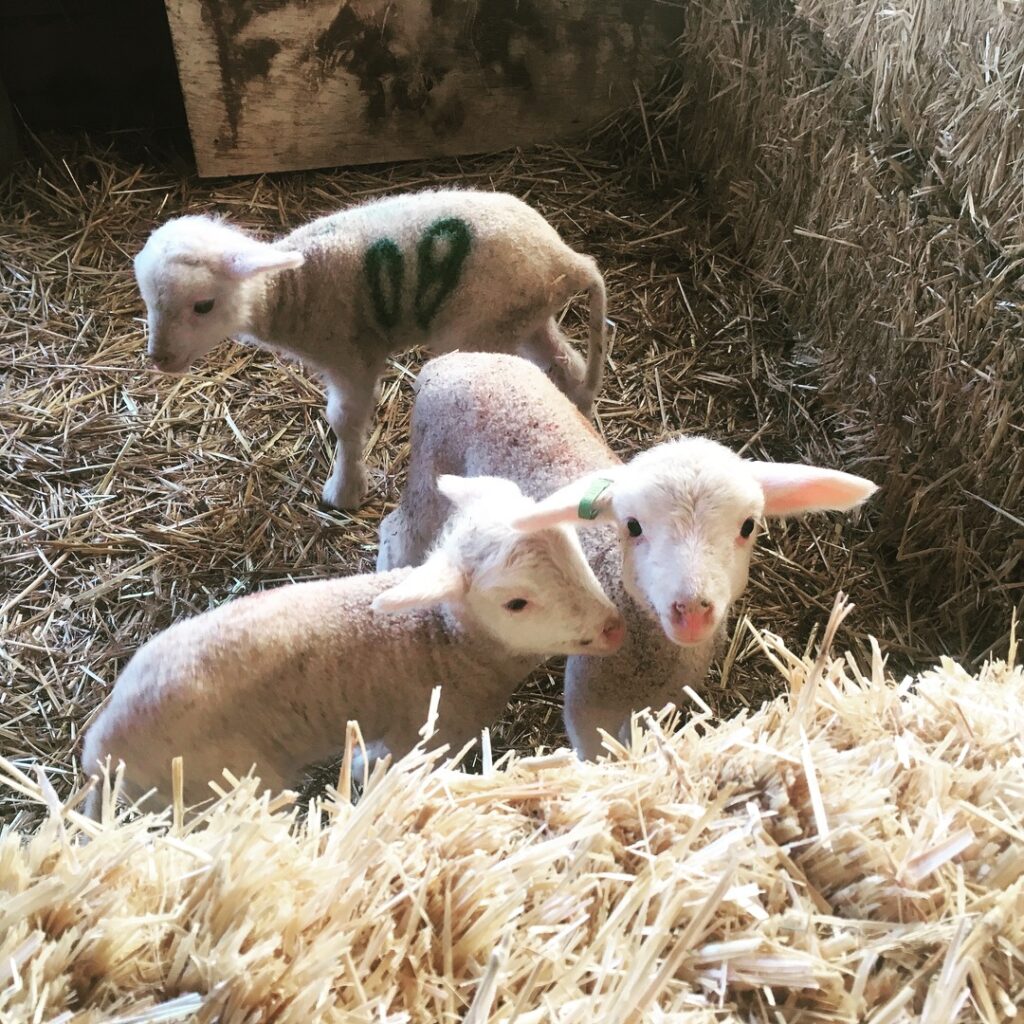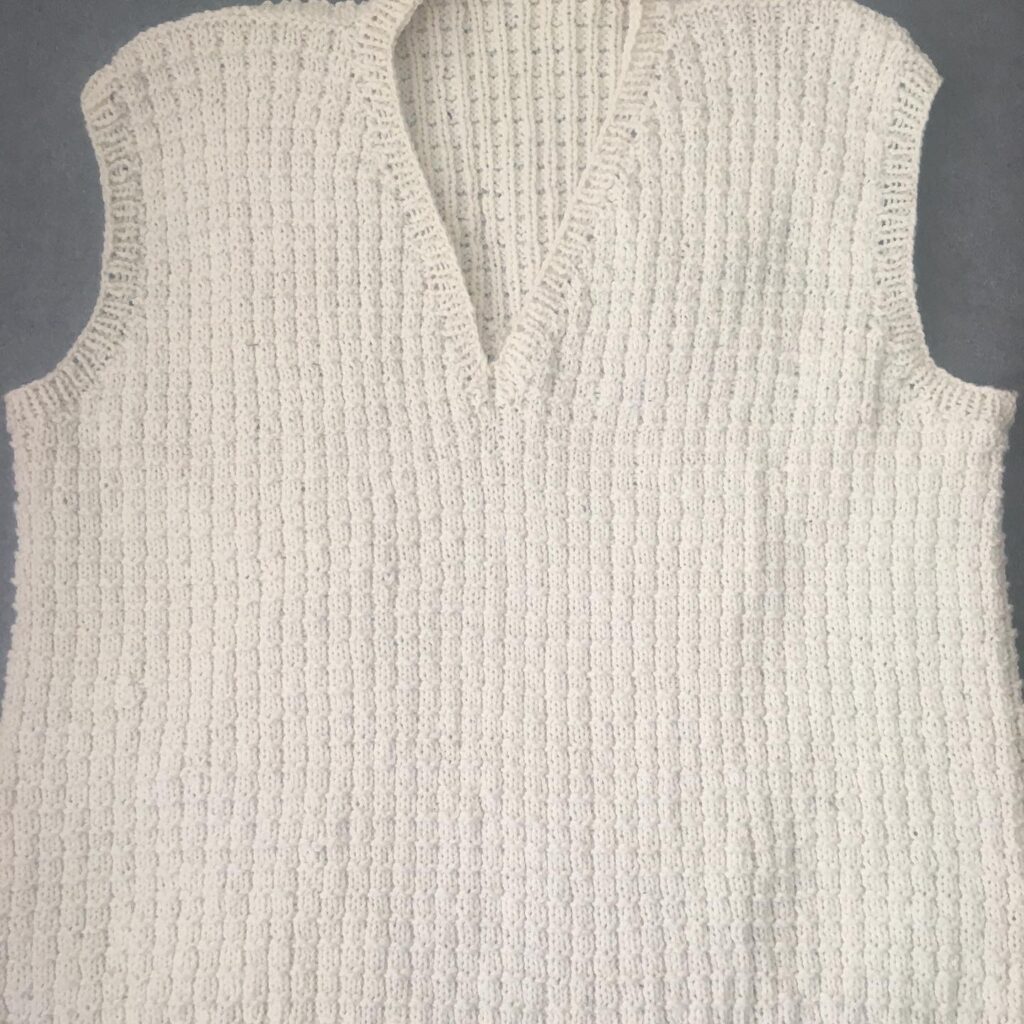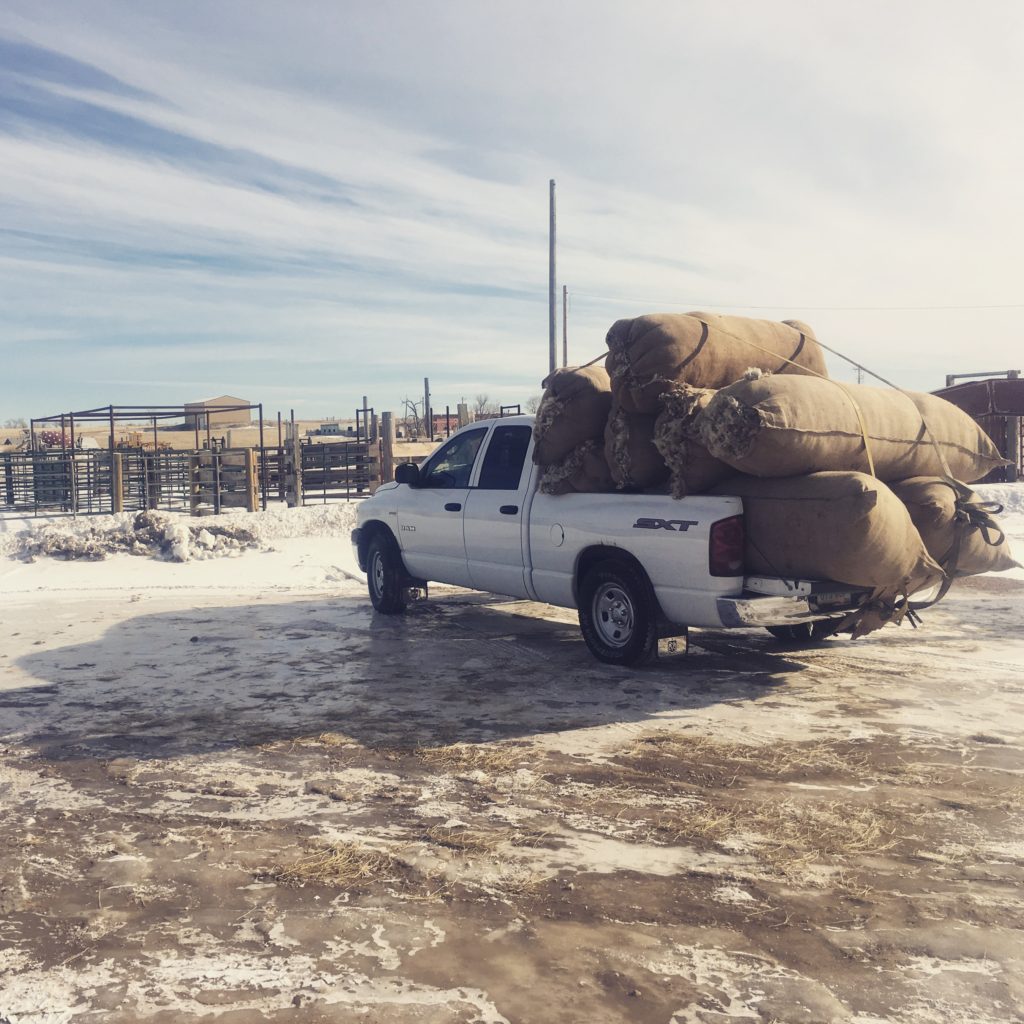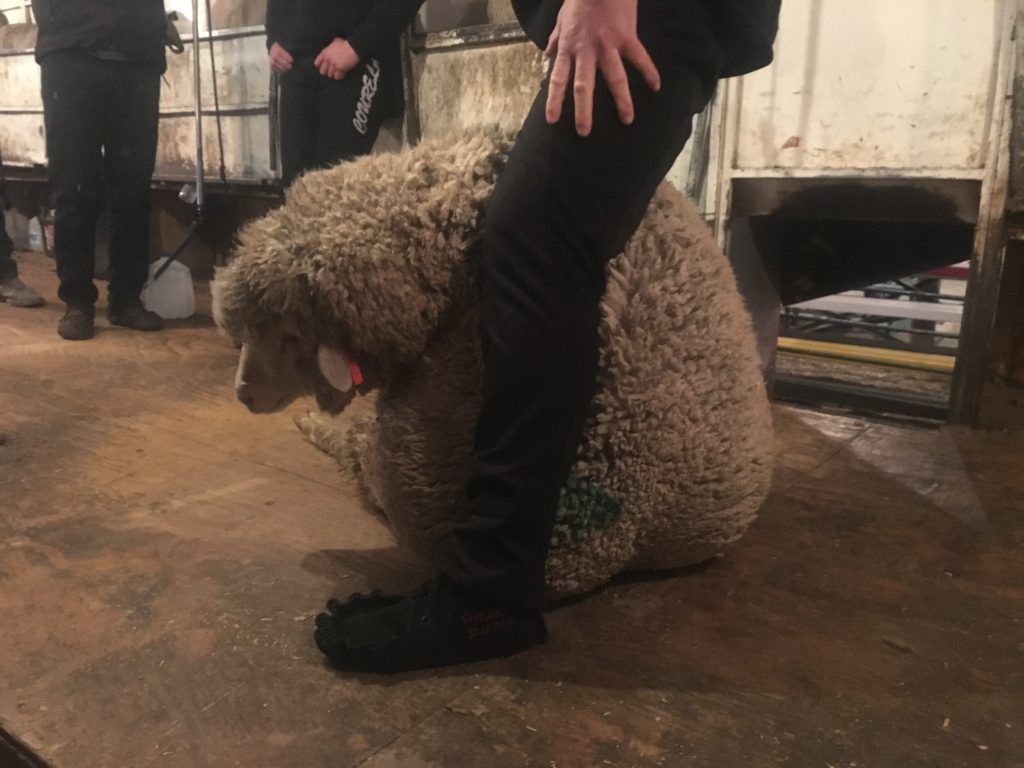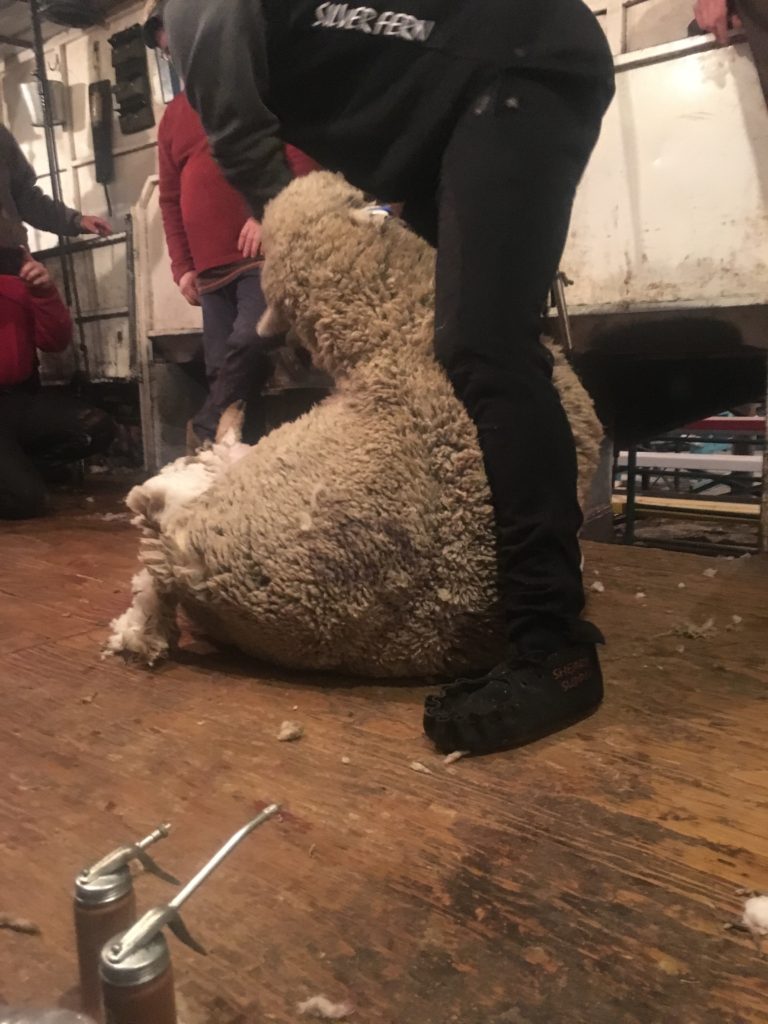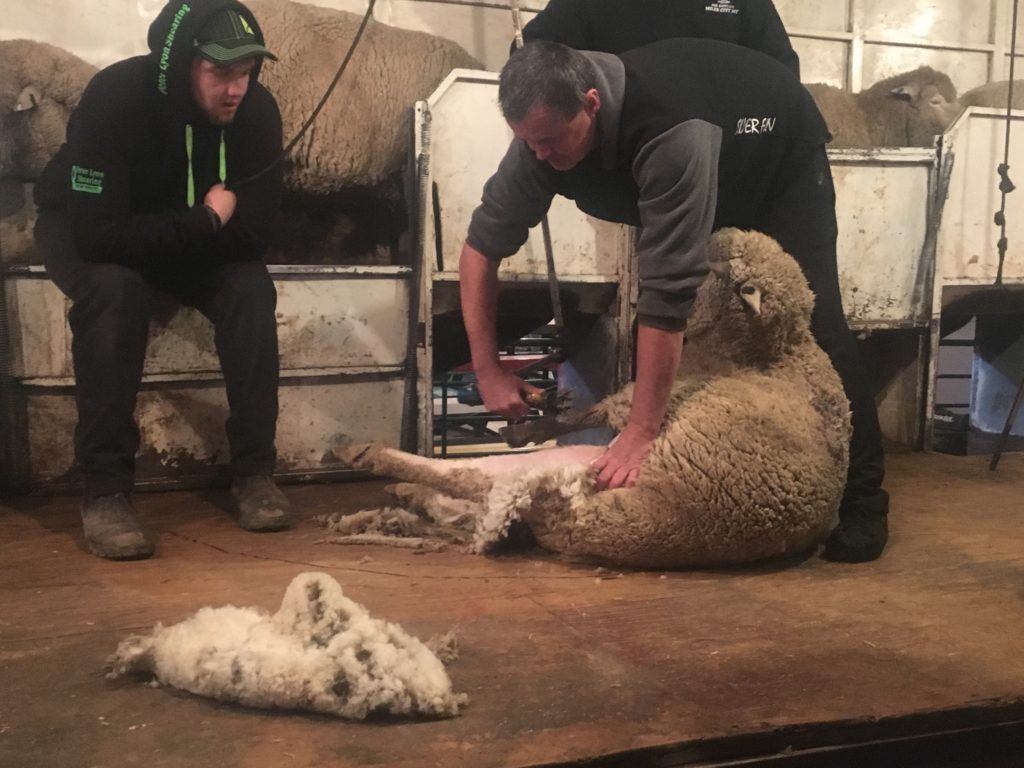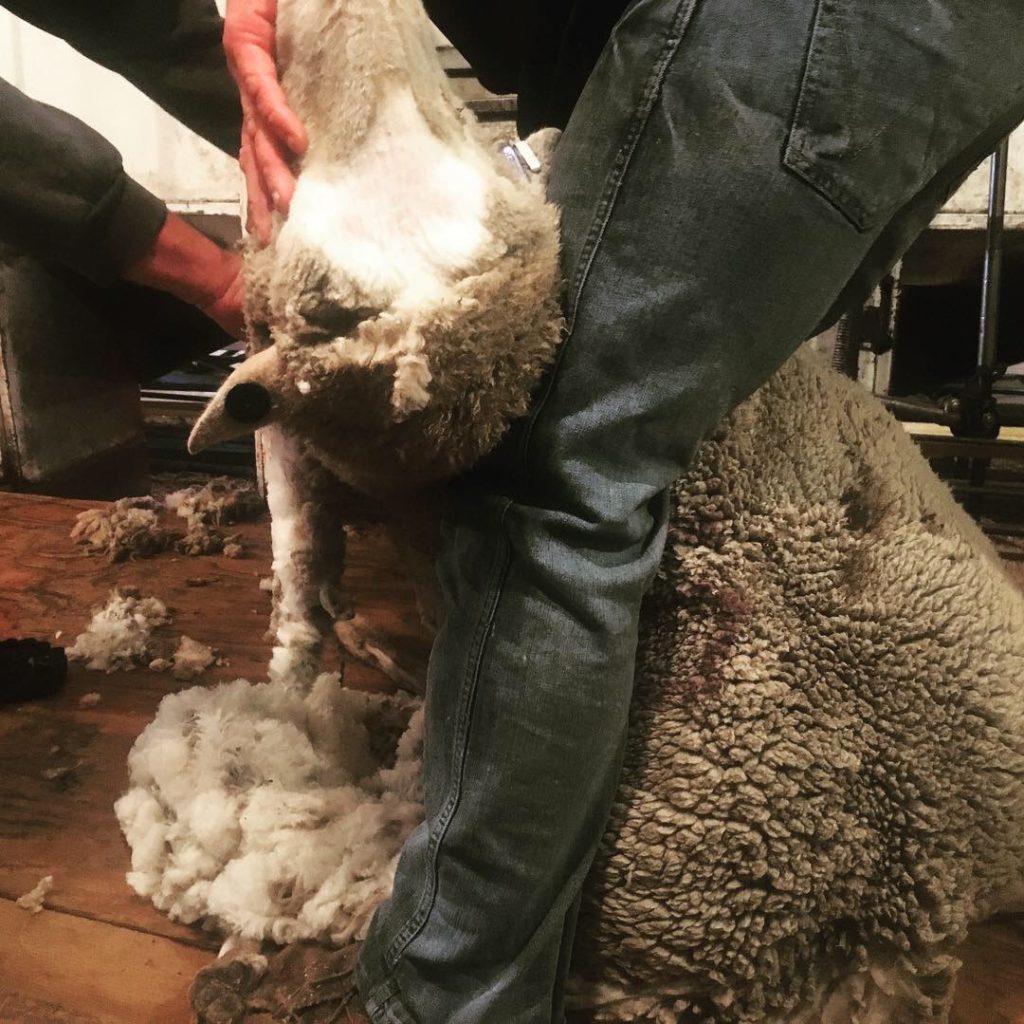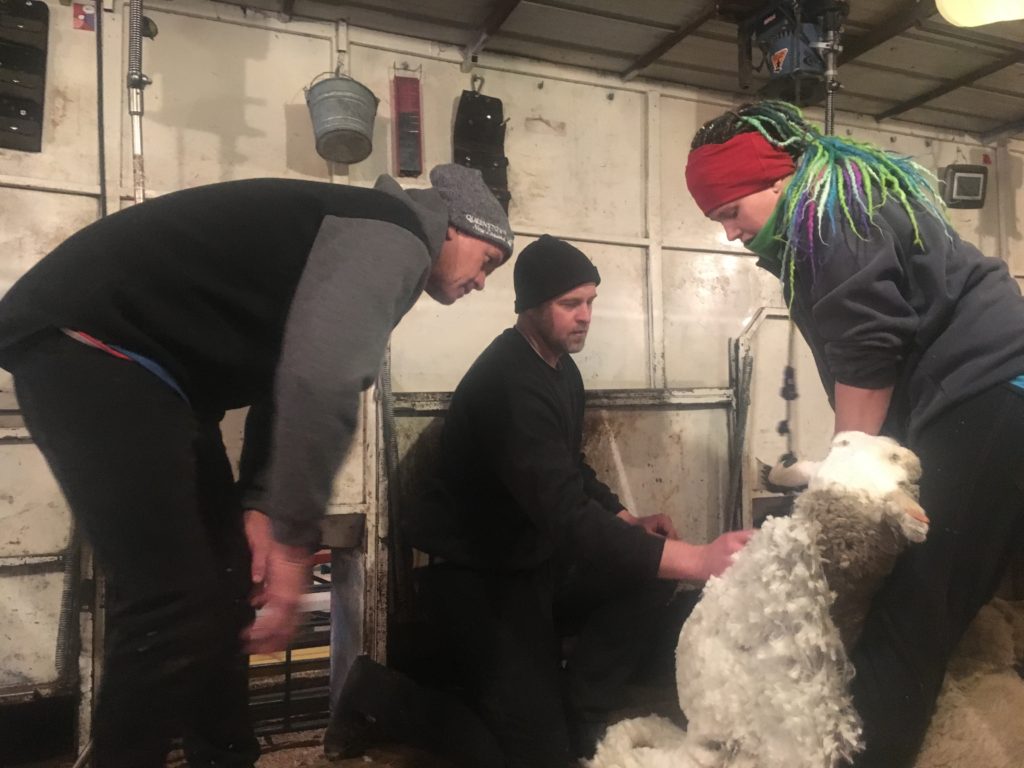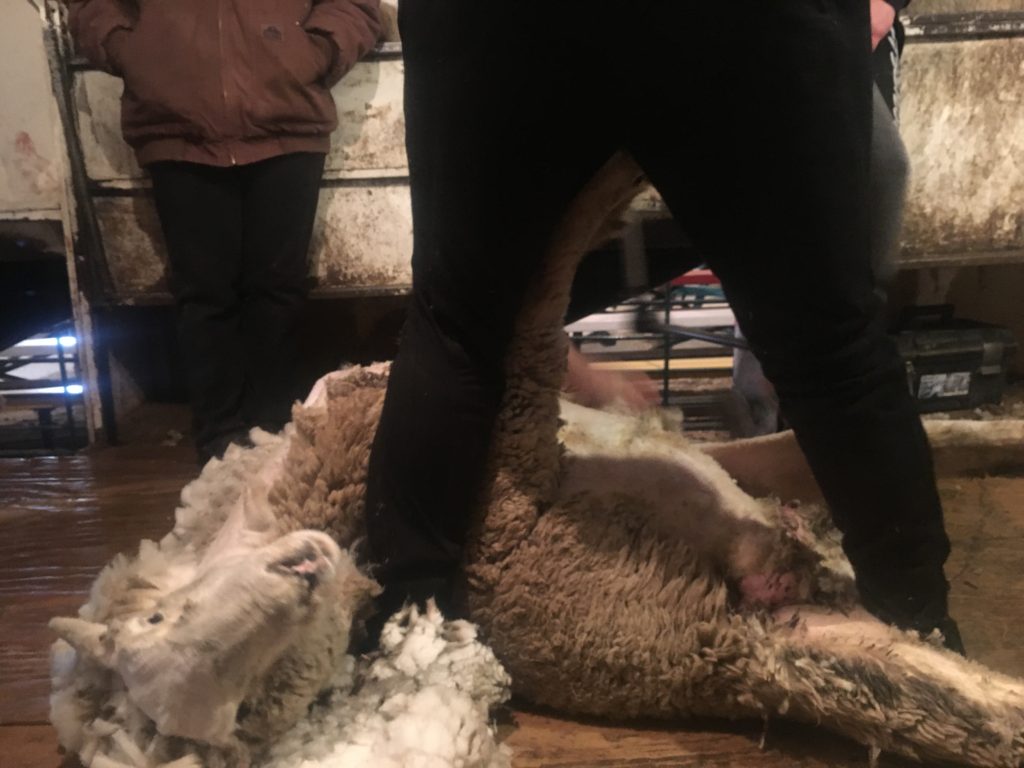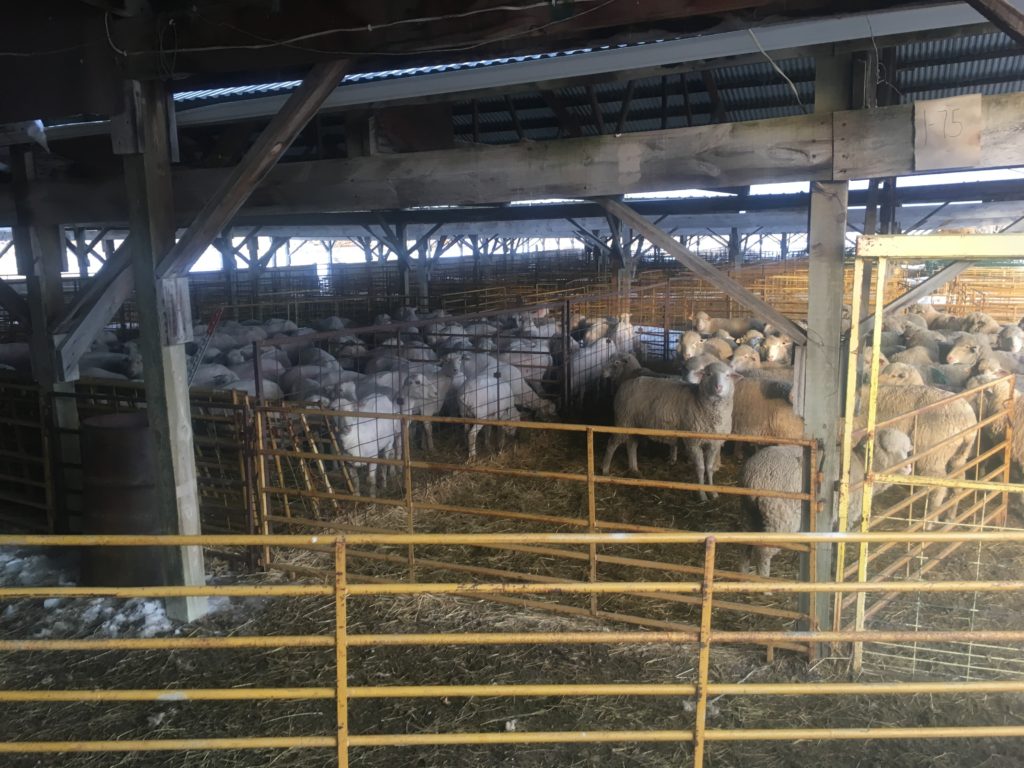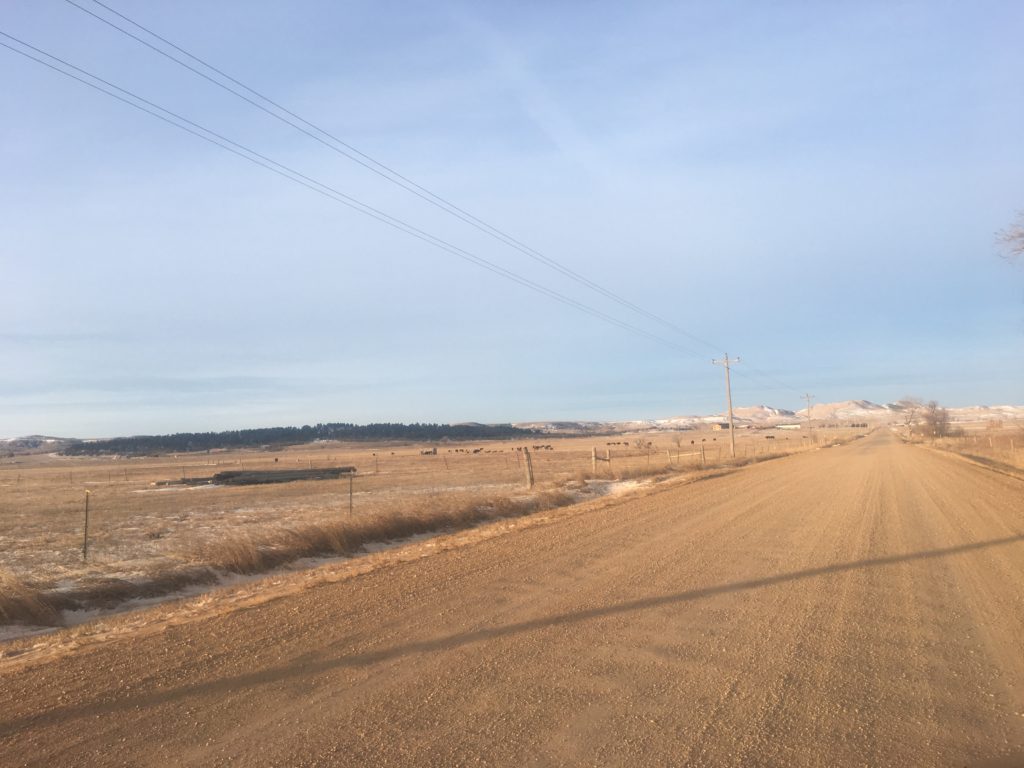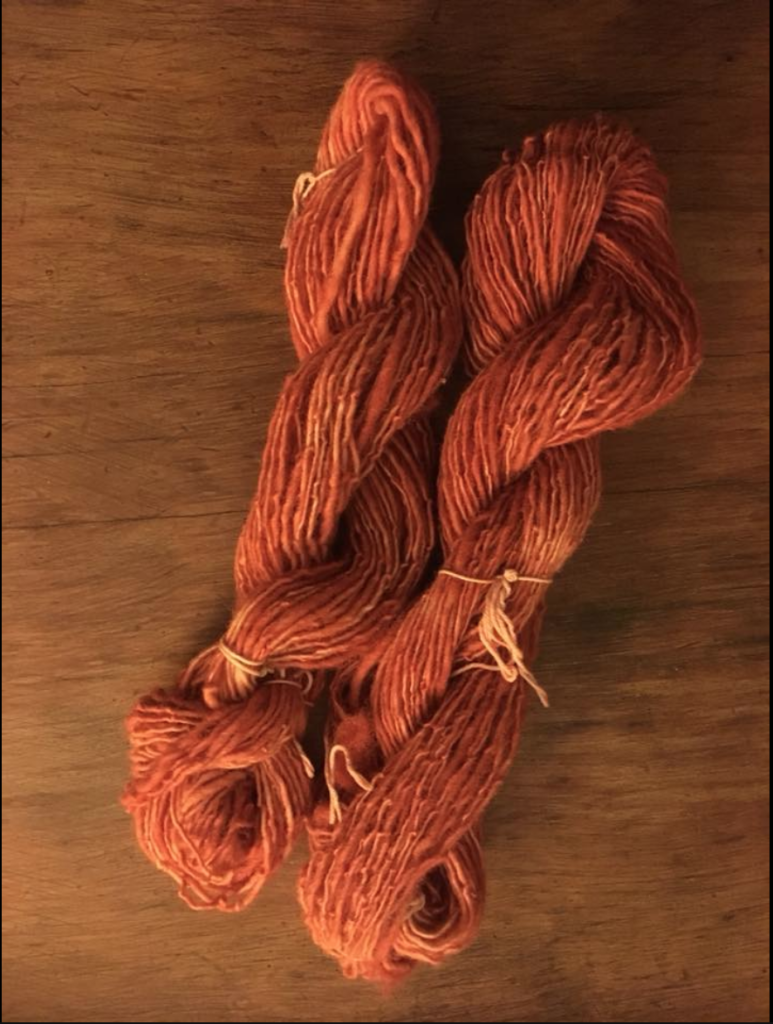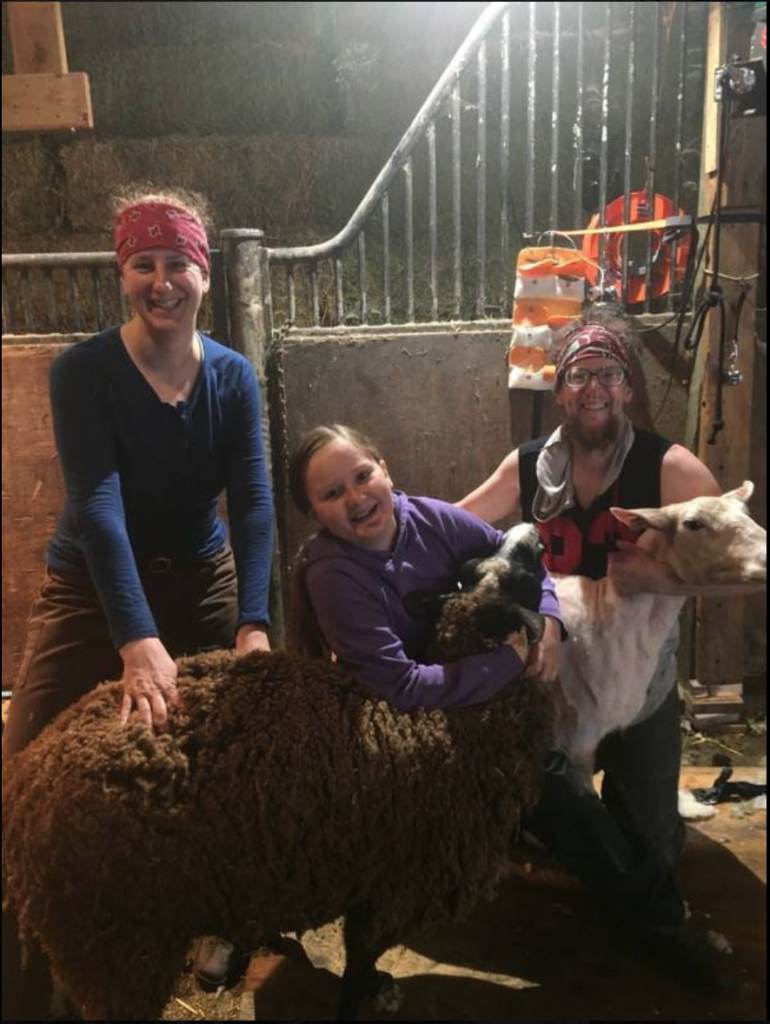The best tool solves all the right problems. And when it solves most, if not all, of your and your customers’ problems; when shearers buy it for each other, and then that shearer buys one for another to pay it forward because it’s just that life changing; then that tool has earned a dedicated blog post, at the very least. I am talking about the Handypiece Pro, the truly portable, go-everywhere, battery-powered sheep shearing machine. I first held one at McWilliams Shearing (the only U.S. retailer that I am aware of) when I was in Montana in December 2018 and wish I’d bought one sooner. (No, this is not a sponsored post or anything like that. I’m just a person, not a paid influencer.)
The upshot: If I were starting out as a small-flock shearer today (vs. in 2013), this is the only piece of equipment I would buy, because it addresses ALL my needs and solves ALL the problems other equipment did not.
A huge thank you to Gynna Clemes for these photos from shearing day at her place, so I could finally get this post written!
What is the Handypiece Pro?
All sets of shearing equipment have four primary parts: 1) a source of power; 2) a handpiece (what the shearer holds); 3) something that connects the handpiece to the source of power; and 4) combs and cutters that go on the handpiece.
The Handypiece Pro is different because its source of power is a battery, and a substantial one at that (a 12 volt 10.5Ah Lithium Polymer battery) with a low current draw. That combination — big battery power, low draw — means you can get through a day’s work on a single battery charge (i.e. crutching 200-300 sheep or shearing ~50, depending on your speed), in areas without power and without a gas-powered generator. Which is life changing.
You also wear all the pieces on a belt. When they said portable, they actually meant it.
Look closely at the photo above and you will see three distinct things hanging on the belt, which is included with the Handypiece kit. At far right, you can see the purple Lister handpiece sticking up from the brown holster bag. To the left of that, beneath a leather strap with a snap to keep it secure, is the battery in its bag. And, to the left of that, just in front of my left hand, is the power switch and speed control. That is how I turn the Handypiece on and off, and either speed it up or slow it down, depending on the fleece situation and conditions before me.
The Features section of the Handypiece website goes into more detail on all of this.
The black thing around my midsection is not part of the Handypiece Pro, but a wool back warmer that is another critical piece of equipment (for me, anyway), as are the Red Ants Pants, made in Montana. All good shearing supplies come from Montana (and happy 406 Day up there, y’all).
There’s something about reaching into a holster for a handpiece that makes shearing feel even more bad a*s than it already is. A hawk screams, a tumbleweed blows through the dusty sheep chute, and the masked shearing bandit walks into a bar… Say hello to my little friend!
At risk of stating the obvious: You can walk onto the job and start shearing. I have a LOT more to say about that, so hold that thought.
In order to turn the Handypiece Pro on, you first connect the battery to the power switch. Then, you flip the switch on. This two-step process prevents accidental on/off. The black cord shown in the photo connects the Lister handpiece to the power.
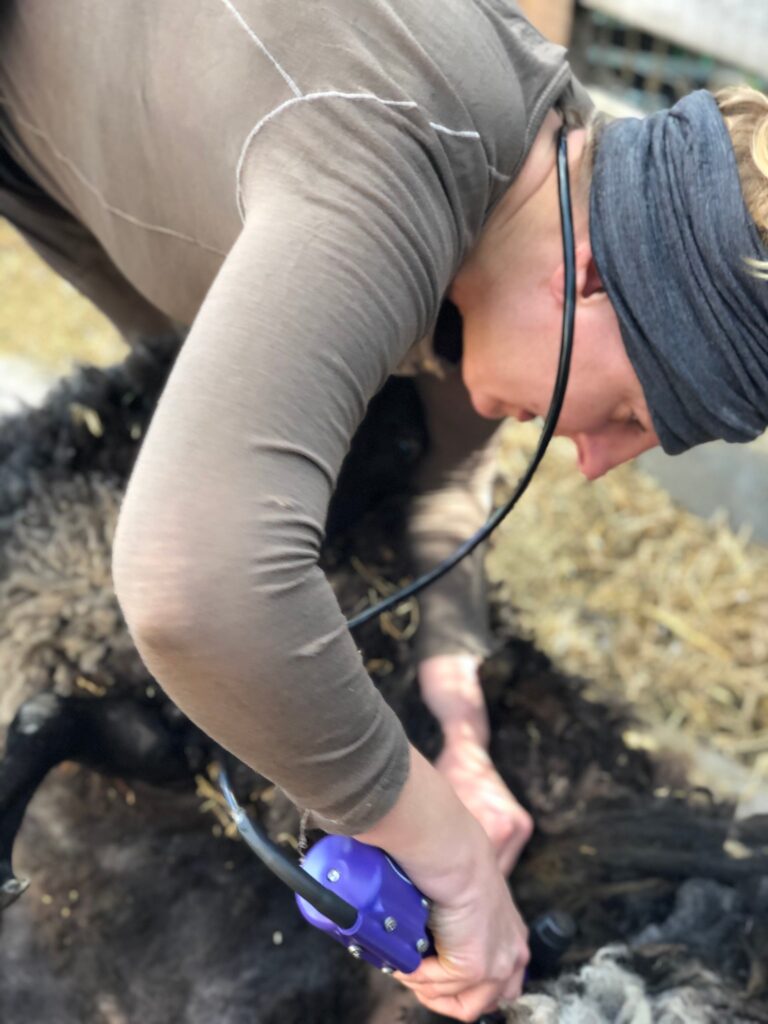
To keep the cord out of the way, and to prevent the sheep’s legs from getting caught up in it, I drape the cord over the back of my neck and down my right arm, something I copied from the videos on the Handypiece website. This more closely mimics a traditional set up in which a handpiece is connected to a drive shaft, which connects the handpiece to a motor, which is plugged into power.
Note: Sheep horns do occasionally manage to hook into the cord near my left chest area.
Critical Differences
It is the specific ways in which the Handypiece is different that matter the most, because it gives shearers the best of all worlds in terms of weight, portability, and heat. Typical portable handpieces require trade-offs between heavier weight and higher heat in exchange for portability. And, unless you’re using manual shearing scissors, you still need power.
Before I had a Handypiece Pro, I (like other small-flock shearers) had two sets of not-ideal choices for every job:
* EITHER a lighter, cooler, more comfortable and nimble handpiece, attached to a heavy, external, not very portable motor that required more set-up time and a stable structure to support it;
* OR a heavier, hotter, less comfortable, yet more portable handpiece, that required little to no set-up time but did require periodic cooling time.
Let’s unpack these tradeoffs, because I think they affect shearing usability more than almost anything else. Established shearers know all this and can skip right over this part.
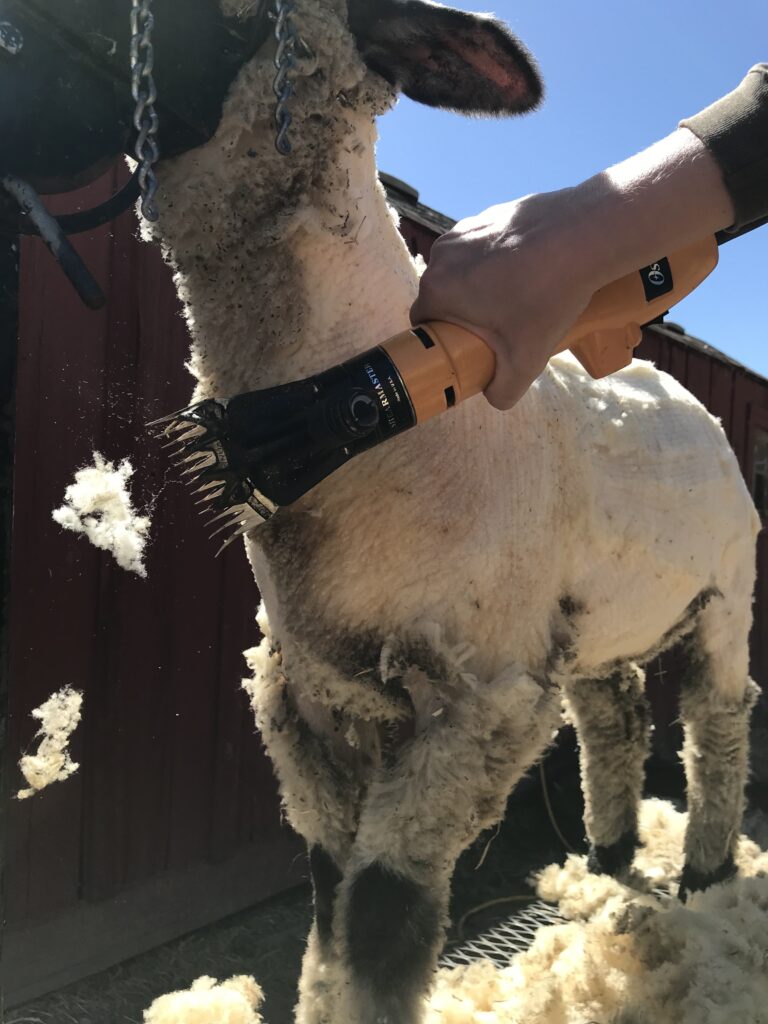
Here is a photo of my Oster Shearmaster in action. I’m not here to knock it. It’s an affordable way to get started at just over $300. It weighs 8.4 pounds, though, not least because the motor is inside the handpiece. The Handypiece Pro, by contrast, is fully FIVE POUNDS LIGHTER, at 3 pounds (1.4 kg).
A heavier handpiece weight and larger circumference makes it more unwieldy, and for a much harder day on your hand and arms (hello, jelly arms). The motor being inside the handpiece makes things hotter, sooner (especially on 90-100 degree days), and the heat travels into the comb and cutter, which the sheep can feel. This means you have to stop working to let the handpiece cool down, probably more often than you want to.
Really think about that time-is-money bit on the business end of all this. When you’re not shearing, you’re not making money. You are standing around waiting for the handpiece to cool off. You’re earning less because you are spending more time at the job than you otherwise would (time you cannot spend earning money elsewhere), for free. I got to the point where I didn’t want to shear more than two or three sheep with the Oster. That’s just me.
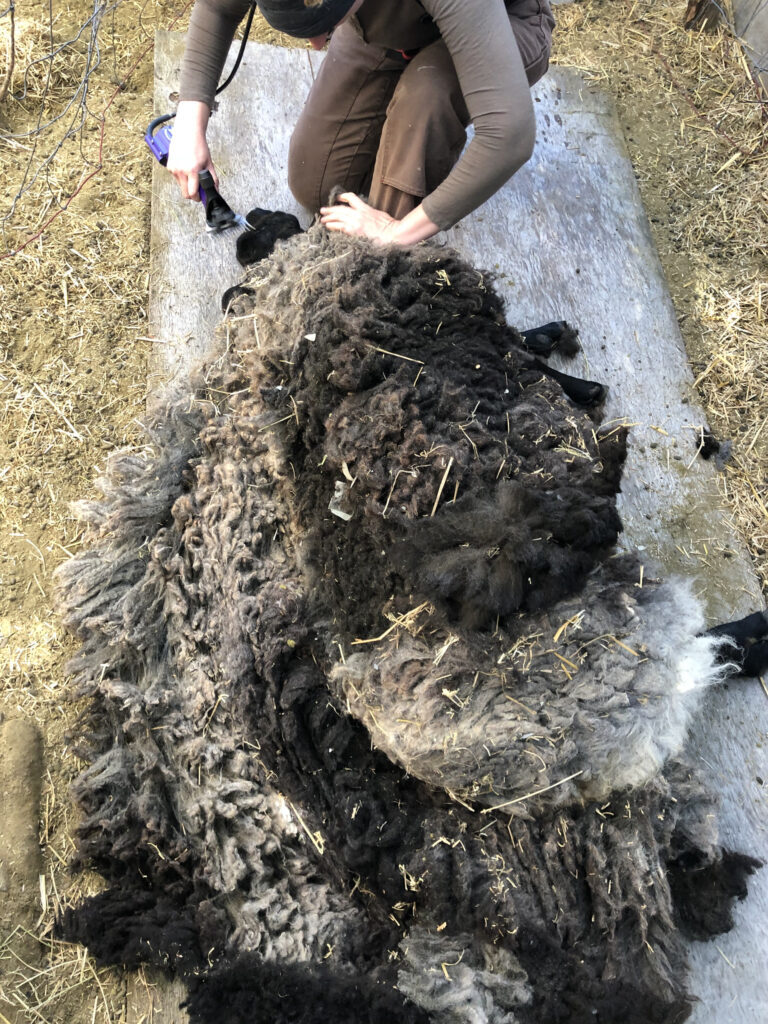
By contrast, note the smaller grip circumference shown above. The power source being external to the handpiece means it takes quite a while to get hot.
Prior to the Handypiece Pro, however, using a lighter handpiece like this (my Heininger) required me to set up an external motor (mine is a Lister QR) to power it. That motor weighs 22 pounds. It needs a stand or other stable structure (2×4 attached to two good posts, real solid fence, or similar) to support it. These are neither a given nor easy to come by. To wit…
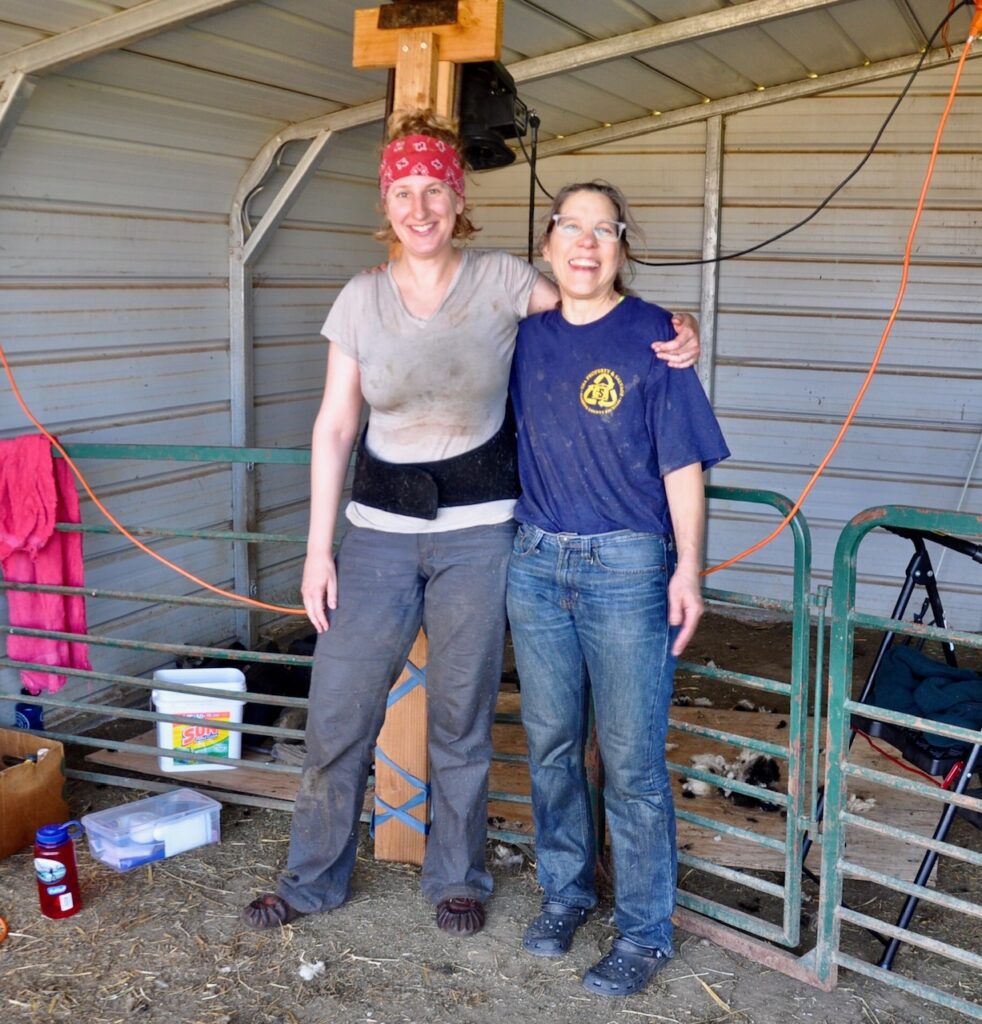
The photo above illustrates what is, far and away, my most common shearing set up: a fairly stable fence, with a couple of solid boards put together and ratchet-strapped to said fence, and the 22-pound shearing motor hung on top of the board, at the correct height (because it must hang at a specific height due to the length of the drive shaft that connects the motor to the handpiece).
This set-up is as good as it gets. Unlike the situation shown above, there is not always a barn, or any shade structure, or a fence, safe power, and light to see by. (I personally know three shearers who have been shocked by ungrounded or other poor power situations. They’re lucky they were able to get the handpiece away from them and didn’t die from electrocution.)
More often, you end up carrying a 22-pound motor through mud on your head, all over a farm, slipping and trying not to die or drop it on your foot or throw your back out, scouting around for a place to hang it or BUILDING a place to hang it. I started carrying spare 2x4s and a drill so I could improve set-ups from one year to the next.
I’ve never set my motor up in under 30 minutes (if you actually time it, walking loads back and forth from the parking, etc.), and it was often as much as an hour if I had to build and finagle things, connect four extension cords and run them through the next valley, etc.
I have set my 22-pound motor on a truck bed and sheared the sheep below it. Possible, resourceful even, but not ideal. Other shearers with welding and other skills have constructed impressive portable rigs, that either stand on their own sort of tripod base, or attach to a pick-up truck and swing out. I admire it but, as someone who does not have those skills already, believe that time and money is better invested in a Handypiece Pro.
Speaking of…
Let’s Talk About Money…
A complete Handypiece Pro kit, delivered, will run you about $1,000 USD. An Oster Shearmaster and similar tools cost $325-$500. A Nexus motor, drive shaft, and starter handpiece (my Heininger) cost about $1,500. Combs, cutters, and the rest of your kit are on top of that.
And I think you need both, which puts you at $2,000. You don’t always need the big rig, and sometimes there is truly NOTHING to hang it from. A shearer may not be ready or able to invest $1,500 after a few days of shearing school, so will probably spend $325 before they’re sure they will continue shearing. After a season or two, they have the ability and funds to justify the $1,500+.
Or, you could spend $1,000 on a Handypiece Pro and never buy anything else, except a supplementary battery. If you almost always or only ever shear 50 sheep or fewer in a day, like I do, you can save $1,000 and not have so much equipment around to store.
About Time
That $1,000 saved isn’t all, because you will also save 30-60 minutes on set-up at every job, and get paid the same. Do the math on that over the course of a season. I often spent 2-4x as much time setting up as I did actually shearing (DEEP SADNESS HERE).
Reducing set-up and breakdown time also makes it easier to do two jobs in the same area in one day, and not be late or working into the night because of unpredictable or janky situations. That’s more money, too. For years, I resisted booking two-job days (even if I was quite close to a second job) because I could never predict how long the entire set-up situation would take, or how physically draining it might be. Would I have enough energy for Job #2 after whatever might be required at Job #1? Who could say? You need ALL your energy for shearing and hoof trimming.
Reduced Frustration Is Huge, Too
I won’t lie: I got frustrated with bad set-ups. Despite my sending photos showing simple, good set-ups, and extended (hour-long) phone conversations and email exchanges on how to build a good set-up (which is unpaid time), I’d show up to a job and have nothing.
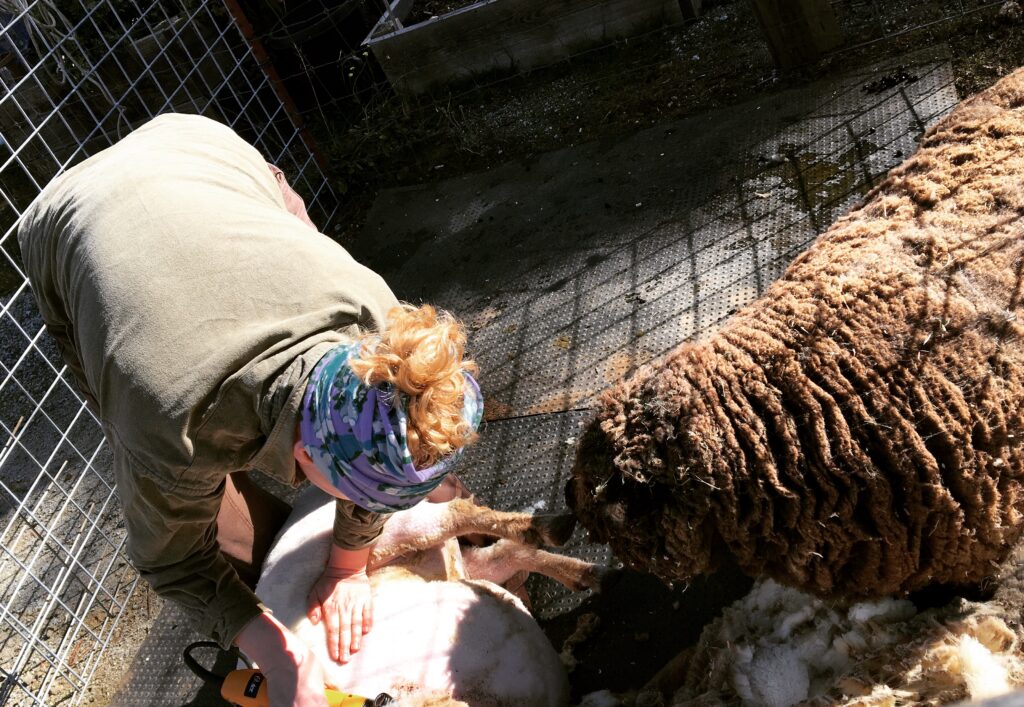
So I did other things to try to make up for folks not being set up. In late 2019, after great deliberation, I changed my 2020 pricing model to a flat rate of $100/hour (instead of the usual ranch call + per-head price), so I could get paid no matter what work I was doing on a job. It rewarded what I saw as “good behavior.” Folks who set-up paid less for shearing than usual, and folks who were not paid more. That went out the window as fast as it came because, with COVID, I had to do ALL the work myself. It wasn’t fair to pass COVID costs onto customers.
But I was wrong. I was solving for the wrong problem. Ultimately, getting set up to shear a handful of sheep once a year, who belong to people who often also have off-farm day jobs, is a vastly different context than shearing hundreds of sheep that get sheared every year, and reside in a place with experienced ranch hands and infrastructure.
The Handypiece Pro solves my problems AND theirs at the same time, for $1,000.
Observations, Tweaks And Hacks
I started using the Handypiece in October, and have not been able to stop it from spinning around my waist somewhat. The handpiece holster rotates toward the back, and the battery and power switch toward the front.
Gynna made a terrific suggestion after watching the Handypiece in action at her shearing day: mounting the Handypiece onto a shooting or carpenter’s harness instead, which would prevent rotation and balance the weight of the items on the belt.
And what did another Handypiece shearer send me a photo of just a few days later? That very idea, implemented (which I hadn’t even mentioned). The same problem inspired the same solution.
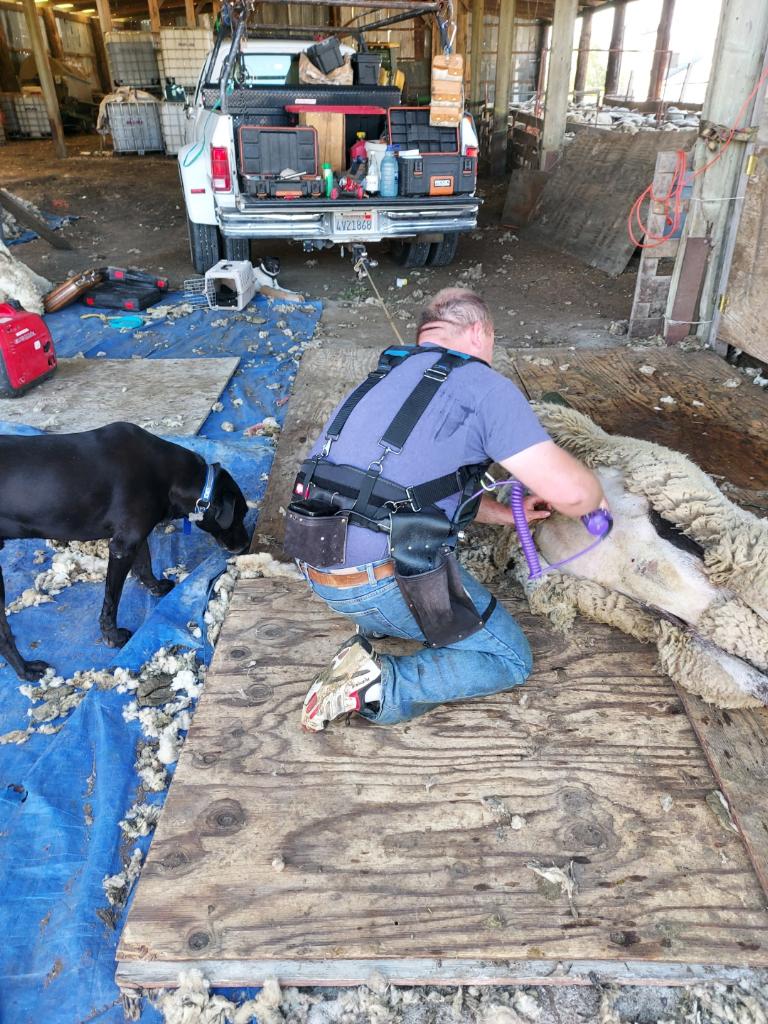
I am now shopping around for a harness that will fit me well, to do the same.
One final note: Do not throw batteries around or drop them. That is dangerous, explosively so.
Now go forth and shear, in less than half the time.
